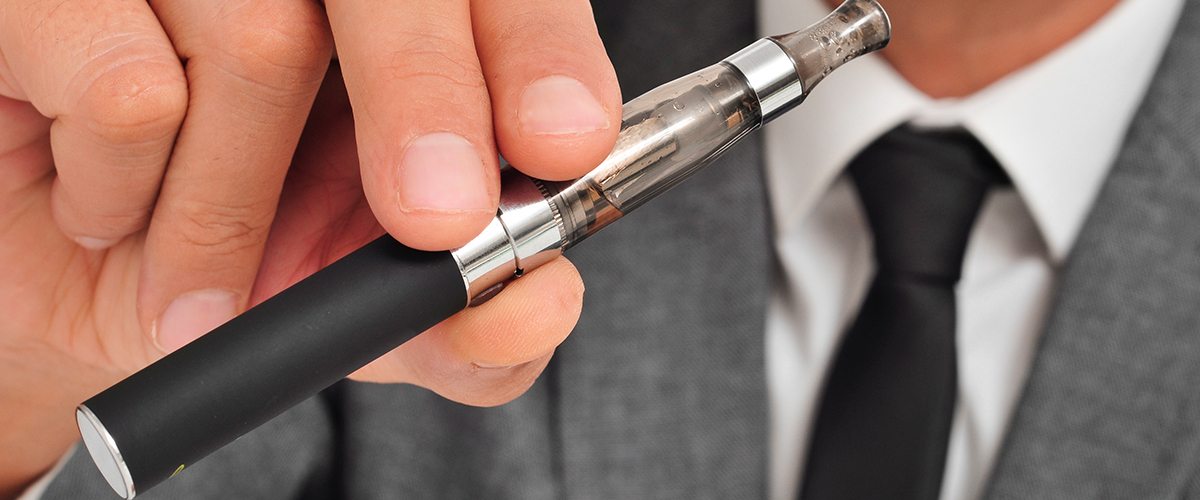[vc_row][vc_column][vc_column_text]
A new study finds that vaporizing cannabis offers the same effects as smoking but significantly reduces exposure to carbon monoxide.
A new clinical trial that will be published in the upcoming June issue of Drug and Alcohol Dependence has found that vaporizing is a safer but just as effective method for consuming cannabis compared to smoking. The study, conducted by researchers from the National Institute on Drug Abuse, compared the subjective physiological effects and expired carbon monoxide (CO) levels after vaporizing, smoking, and orally-consuming cannabis.
Participants in the study consumed a placebo or cannabis containing 6.9 percent (about 54 mg) tetrahydrocannabinol (THC) via vaporizing, smoking or oral methods.
All of the participants that vaporized and smoked cannabis reported significant elevated physiological effects immediately after consumption, while only occasional cannabis users saw a significant physiological after oral dosing. This suggests that vaporizing and smoking are more ideal consumption methods for users interested in the most immediate and potent effects. Those who regularly use cannabis, however, may not experience as significant effects through oral methods because they develop partial tolerance.
Additionally, the study found, smoking produced significantly increased expired CO concentrations compared to vaporizing 15 minutes to 6 hours following consumption. Both vaporizing and smoking release the active compounds of cannabis by heating the material. However, vaporizers use convection or conduction heating and heat the cannabis material to a much lower temperature. This heating technique avoids combustion, eliminating the release of harmful toxins like carbon monoxide.
“Vaporized cannabis is an attractive alternative for medicinal administrations over smoking or oral routes; effects occur quickly and doses can be titrated with minimal CO exposure,” the study concludes.[/vc_column_text][/vc_column][/vc_row][vc_row][vc_column][vc_single_image image=”17365″ img_size=”1200×250″ onclick=”custom_link” link=”https://www.medicalmarijuanainc.com/overview-of-medical-marijuana-research/”][/vc_column][/vc_row][vc_row][vc_column][vc_column_text]Carbon monoxide is a colorless, odorless toxic gas that blocks the blood’s ability to carry oxygen to body cells. CO is harmful to your body at any level and can cause fatigue, headache, dizziness, nausea, mental confusion, rapid heart rate, and death. Long-term exposure at lower levels can lead to heart disease.
Previous studies investigating the differences between marijuana smoking and vaporizing methods have come to the same conclusions. In 2007, researchers at the University of California concluded that “vaporization of cannabis is a safe and effective mode of delivery of THC” after finding that a cannabis-vaporizing device effectively delivered the same levels of THC as smoking, but without causing an increase in CO levels. We recently detailed the benefits of using a vaporizer and you can read more about why it’s a healthier alternative here.
You can access the entire National Institute on Drug Abuse study, “Subjective and physiological effects, and expired carbon monoxide concentrations in frequent and occasional cannabis smokers following smoked, vaporized, and oral cannabis administration,” via Science Direct.
Cannabis has been legalized for medical purposes in 28 states and Washington D.C., and eight states plus Washington D.C. allow cannabis to be used recreationally by adults. You can learn more about cannabis laws throughout the U.S. on our education page. Follow our news feed to keep up with the latest studies as well as developments from Medical Marijuana, Inc. and our portfolio of companies.[/vc_column_text][/vc_column][/vc_row]






